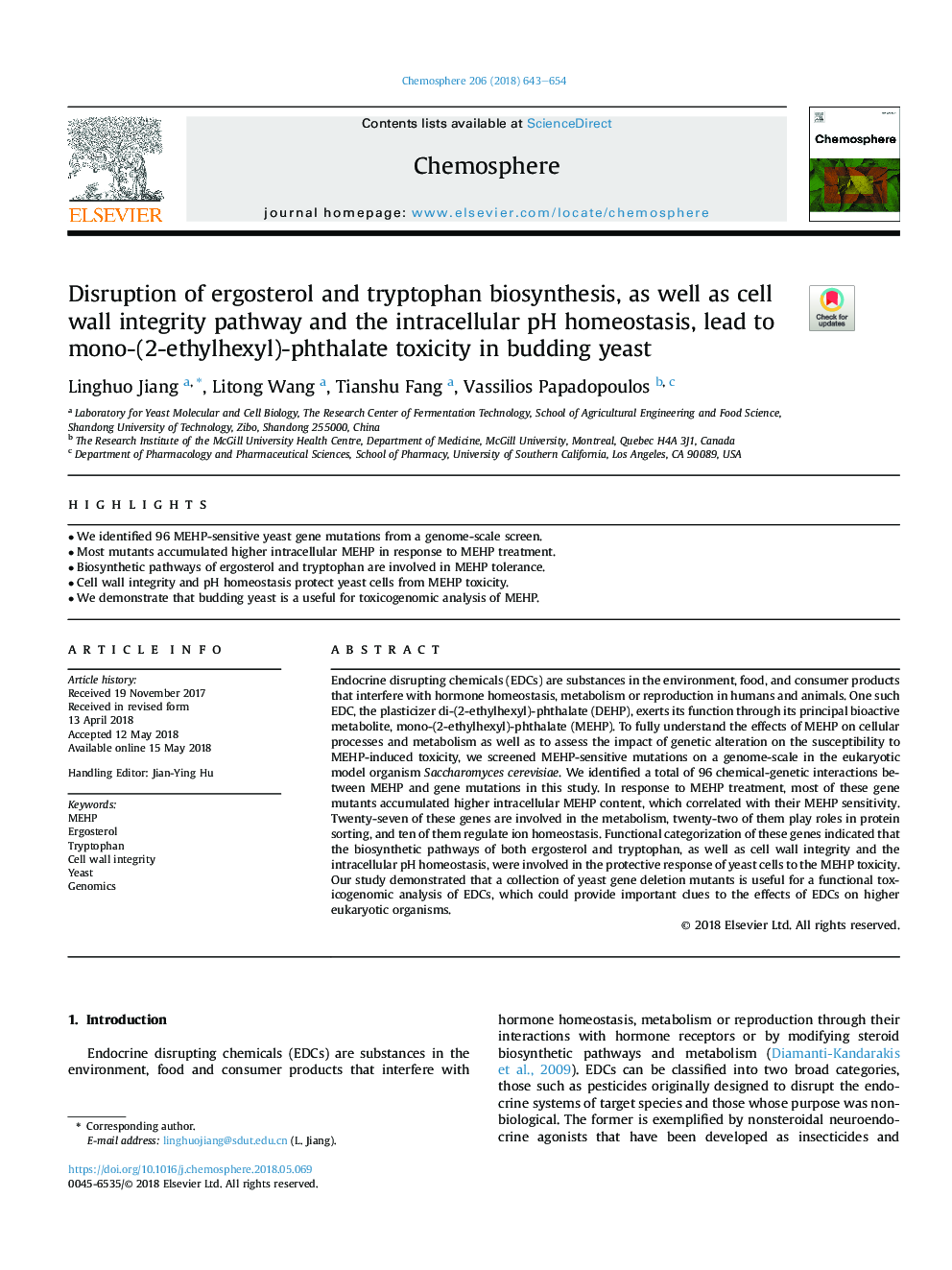| Article ID | Journal | Published Year | Pages | File Type |
|---|---|---|---|---|
| 8850924 | Chemosphere | 2018 | 12 Pages |
Abstract
Endocrine disrupting chemicals (EDCs) are substances in the environment, food, and consumer products that interfere with hormone homeostasis, metabolism or reproduction in humans and animals. One such EDC, the plasticizer di-(2-ethylhexyl)-phthalate (DEHP), exerts its function through its principal bioactive metabolite, mono-(2-ethylhexyl)-phthalate (MEHP). To fully understand the effects of MEHP on cellular processes and metabolism as well as to assess the impact of genetic alteration on the susceptibility to MEHP-induced toxicity, we screened MEHP-sensitive mutations on a genome-scale in the eukaryotic model organism Saccharomyces cerevisiae. We identified a total of 96 chemical-genetic interactions between MEHP and gene mutations in this study. In response to MEHP treatment, most of these gene mutants accumulated higher intracellular MEHP content, which correlated with their MEHP sensitivity. Twenty-seven of these genes are involved in the metabolism, twenty-two of them play roles in protein sorting, and ten of them regulate ion homeostasis. Functional categorization of these genes indicated that the biosynthetic pathways of both ergosterol and tryptophan, as well as cell wall integrity and the intracellular pH homeostasis, were involved in the protective response of yeast cells to the MEHP toxicity. Our study demonstrated that a collection of yeast gene deletion mutants is useful for a functional toxicogenomic analysis of EDCs, which could provide important clues to the effects of EDCs on higher eukaryotic organisms.
Related Topics
Life Sciences
Environmental Science
Environmental Chemistry
Authors
Linghuo Jiang, Litong Wang, Tianshu Fang, Vassilios Papadopoulos,
